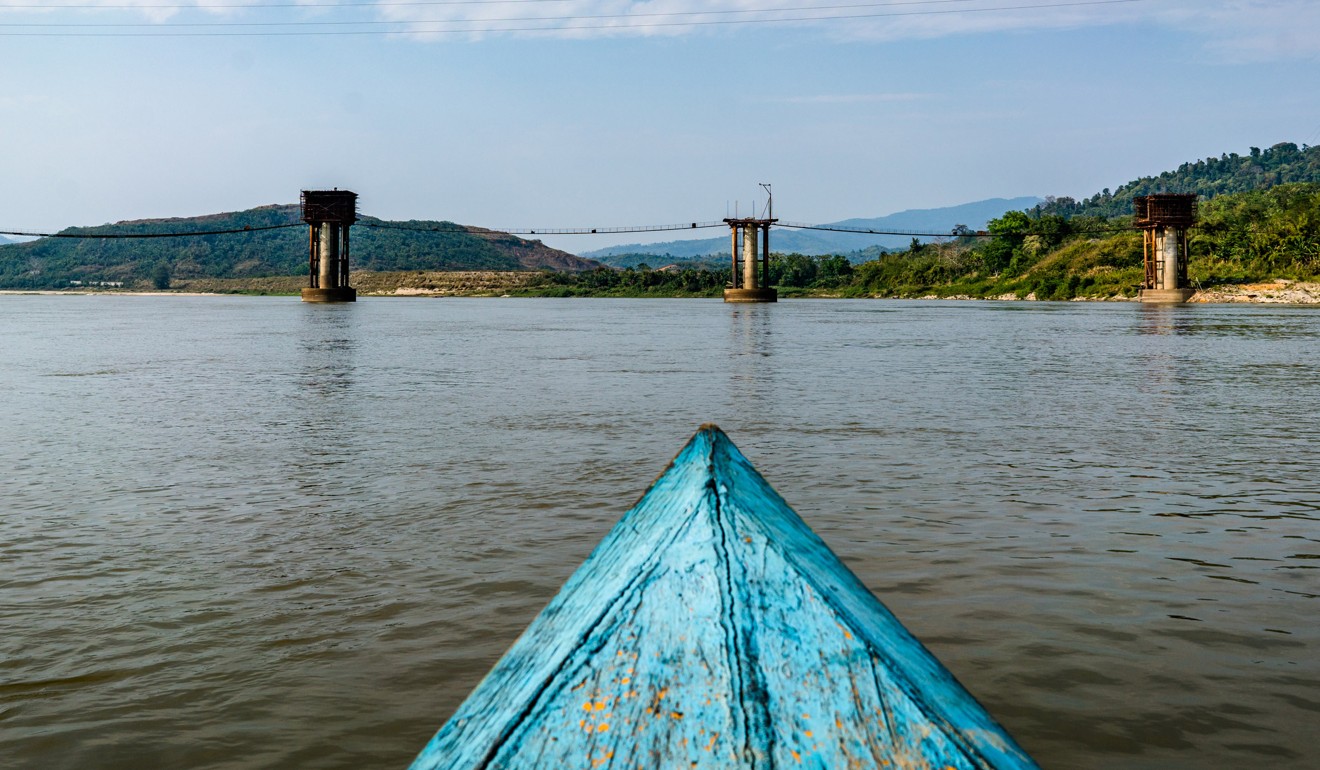
Myanmar’s stalled China-backed Myitsone dam project strained bilateral ties for years — now it could be scaled back or moved
- The chairman of Myanmar’s investment commission cited several problems, including an earthquake fault line and a catchment area ‘twice the size of Singapore’
A top Myanmar investment official on Tuesday suggested scaling back or relocating a stalled Chinese-backed hydropower project that has strained ties between the neighbours for nearly a decade.
The suggestion follows a statement by the Chinese Embassy in Myanmar earlier this month that said civil society organisations in Kachin state supported the planned project. Hundreds of households had already been forced to relocate before work was halted.
In 2011, Myanmar’s quasi-civilian government suspended the US$3.6 billion Myitsone hydropower project in the country’s north amid environmental concerns, upsetting relations with China.
Asked about the project at an investment conference, Thaung Tun, chairman of Myanmar’s investment commission, listed several problems, from an earthquake fault line running under the project site to a large catchment area affecting residents.

“[The] catchment area would be twice the size of Singapore. This would mean that a lot of villages will have been displaced from their accessible land. That is the issue,” Thaung Tun told reporters at the conference in the capital Naypyidaw.
He listed several alternatives, including scaling back the dam, moving it to a different location or offering the operator an alternative project. He did not say if the government had a preferred option.
Myanmar has to consider its relations with China, its largest trade partner, and “was working hard to find the solution,” he said.
A lot of villages will have been displaced from their accessible land. That is the issue
China echoed this sentiment in its statement earlier this month, which sparked protests in Yangon and outcry online.
“Myanmar’s economic and social development and the building of the China-Myanmar Economic Corridor require sufficient electricity supply. To this end, China and Myanmar are in close consultation on the issue to find a proper solution acceptable to both sides as soon as possible,” read the statement posted to the Chinese Embassy in Myanmar’s Facebook page.
“Leaders of political parties and social organisations in Kachin state … said the local people of Kachin state do not oppose the Myitsone hydropower project; it is some individuals and social organisations from outside that oppose the project,” said the statement.
A civil society organisation formed by displaced Kachin residents called Mungchying Rawt Jat (MRJ) rejected the Chinese Embassy’s statement last week, claiming that the country’s State Power Investment Corporation Company owes compensation to residents who have already been forced to abandon their land and farming livelihoods due to the project.
China’s foreign ministry did not immediately respond to a request for comment.
What does China’s “Belt and Road” have to do with Myanmar’s meth problem?
Spearheading the effort to find a solution is a commission launched to review the project by Aung San Suu Kyi’s government, which came to power in 2016. Myanmar also began informal talks with Beijing and dam operator Yunnan International Power Investment, a unit of State Power Investment Corp.
Finding such a solution is critical for Suu Kyi, who has benefited from Beijing’s support at the United Nations following a 2017 army crackdown that drove 730,000 Rohingya Muslims out of Myanmar.
Myanmar also needs Beijing’s help in peace talks with several ethnic armed groups operating along its northern and eastern borders with China.
“Moving forward without the support of the local community could have implications on how they vote in the 2020 elections,” said Alistair Cook, research fellow at the S. Rajaratnam School of International Studies in Singapore. “If they want community support it’s going to be a slow process, it can’t happen overnight.”
Thaung Tun said original plans for the dam were not “thought out” and failed to consider the impact on the community and the environment.
“We just haven’t seen any substantive engagement that has lead to any recognition of the community’s perspective,” said Cook.
The dam’s development company donated housing to resettle those who were displaced and paid each a year’s salary as compensation, but many residents were moved to land they could not farm and the initial lump sum soon dried up without a regular income.
“A lot of people really see the development company’s activities in Kachin as window dressing, rather than substantive changes,” said Cook.
The dam in Kachin is very unpopular. Suu Kyi’s ruling National League for Democracy (NLD) lost a seat in the local by-elections last year and party officials have voiced concern about their popularity in ethnic minority areas ahead of the 2020 general election.
On Monday, Nobel laureate Suu Kyi opened the first government-led investment conference by calling on global investors to put their money in Myanmar, seeking to offset the negative impact of the Rohingya crisis and slow pace of economic reforms.
China’s Yunnan province, the planned destination for about 90 per cent of the dam’s electricity, now has a power surplus, according to Thaung Tun. “There’s no need for this dam now,” he said.


